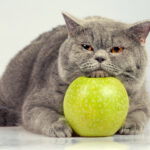Choosing the right cat food can be a daunting task, especially with so many options available on the market. However, it’s essential to provide your feline companion with a balanced and nutritious diet that meets their specific needs. In this guide, we will explore everything you need to know about choosing the perfect cat food for your furry friend.
Introduction to Choosing the Right Cat Food
Cats have unique nutritional requirements that differ from dogs or humans. They are obligate carnivores, which means they require a diet high in protein and fat derived from animal sources. Unlike dogs, cats cannot digest carbohydrates efficiently, making them more susceptible to obesity and diabetes if fed a diet too rich in grains. It’s crucial to choose a cat food that provides complete and balanced nutrition tailored to your cat’s age, lifestyle, and health status.
Understanding Your Cat’s Nutritional Needs
When selecting a cat food, consider your cat’s life stage, activity level, and any medical conditions they may have. Kittens, pregnant females, and seniors all have different nutritional needs than adult cats. Active cats require more calories and protein to fuel their energy levels while indoor cats may benefit from lower-calorie options to prevent weight gain. Certain medical conditions such as kidney disease or urinary tract issues may also require specialized diets.
Common Ingredients in Cat Food and Their Benefits
Meat is the primary ingredient in most quality cat foods, providing the necessary protein and amino acids for your cat’s growth and maintenance. Look for named meats like chicken, turkey, or fish rather than generic meat byproducts. Other important ingredients include vitamins and minerals, fiber, and omega-3 fatty acids. Vitamins and minerals help support immune function and overall health, while fiber promotes gut health and helps regulate bowel movements. Omega-3 fatty acids improve skin and coat condition and reduce inflammation throughout the body.
How to Read a Cat Food Label
Reading a cat food label can be overwhelming, but understanding what to look for can make it easier. First, check the list of ingredients to ensure that meat is listed as the first ingredient followed by other whole foods like vegetables and fruits. Avoid products with excessive amounts of fillers like corn, wheat, or soy, which offer little nutritional value to cats. Also, pay attention to the guaranteed analysis section, which lists the minimum percentages of crude protein and fat provided by the food. Ideally, you want a product that offers at least 25% protein and 10% fat. Finally, check the feeding guidelines on the package to ensure that you’re offering the appropriate portion sizes based on your cat’s weight and activity level.

In conclusion, choosing the right cat food requires careful consideration of your cat’s individual needs and preferences. By following these tips and doing your research, you can find a high-quality product that provides complete and balanced nutrition for your beloved feline companion.

